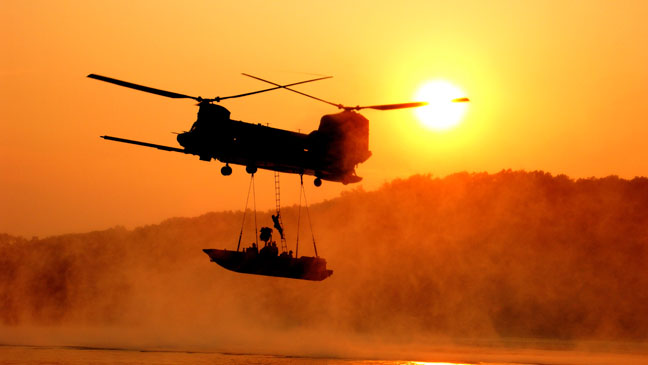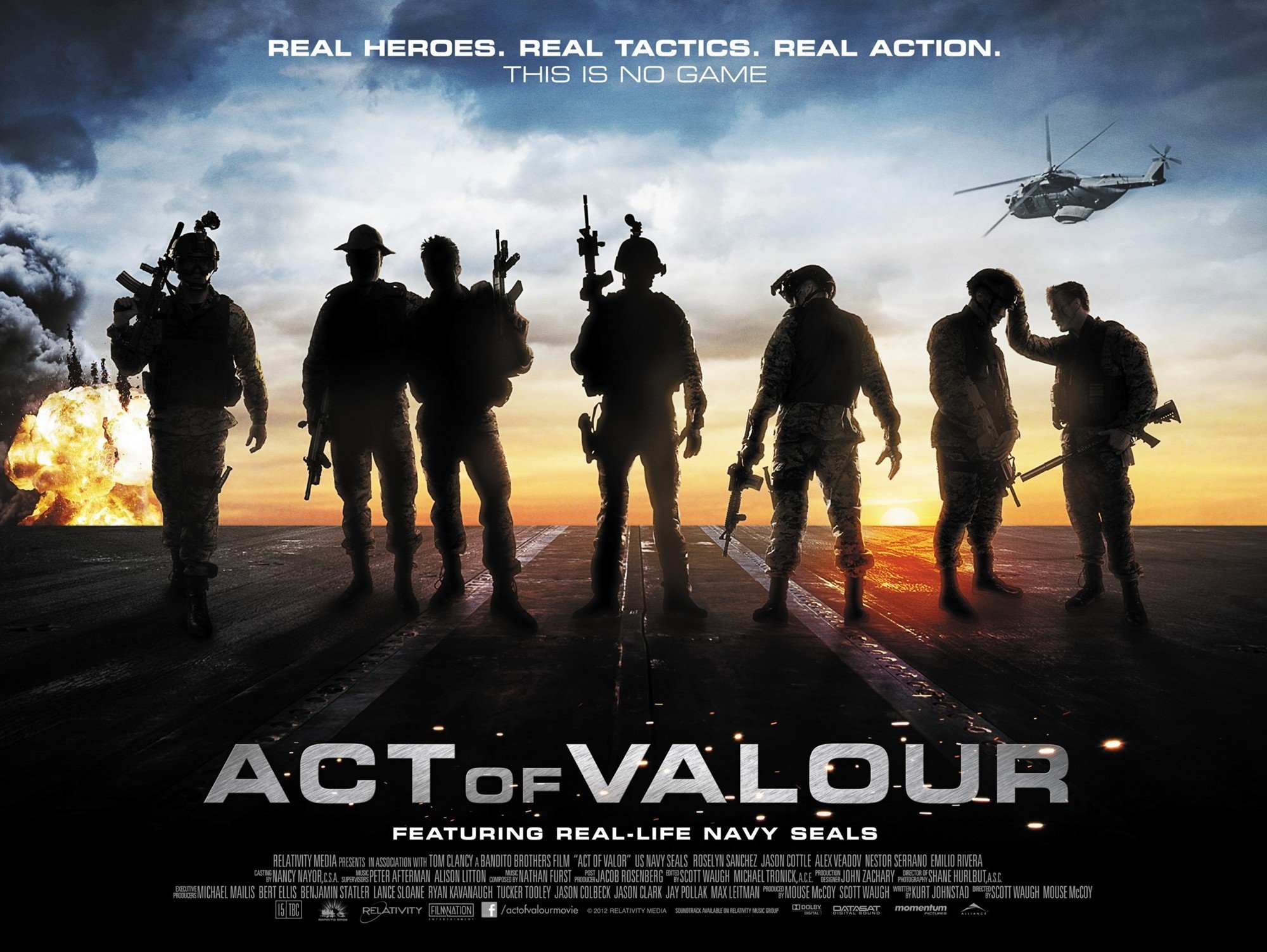There are various reasons why “Act of Valor”, the movie released on Feb. 24, 2012, is interesting from the military geek point of view.
First of all it features the Navy SEALs some of which are not actors but regular guys, active duty military that have taken part to the most dangerous U.S. special operations all around the world; missions that, as the movie clearly shows, are often (if not always) supported by cargo planes, helicopters, combat planes, and drones.
[youtube=http://youtu.be/ZnlPgo9TaGo]
The movie opens with footage of a High-Altitude Low Opening (HALO), a type of airborne jump that is repeated another couple of times during the story, during daylight and at night. As they did during a recent operation in Somalia.
Noteworthy, unlike it happened during Operation Neptune’s Spear, the raid that killed Osama Bin Laden, the SEALs assault on a riverside compound is not performed using fast-rope and stealthy Black Hawks choppers. However, the exfiltration of the hostage involves two MH-47G Chinooks of the 160 SOAR (Special Operations Aviation Regiment) carrying SOC-Rs (Special Operations Craft – Riverine), high speed boats used for insertion/extraction ops and fire support into a low-to-medium threat environment in a riverine area.
During the exfil operation the SEALs use a RQ-11 Raven drone, a man-portable UAS (Unmanned Aerial System) controlled directly by the ground troops. The Raven is a relatively small bot whose ability is to automatically follow a moving target that was selected by touching the screen of the ROVER-like ground control system. Even if I’m not sure that the kind of imagery delivered to the end user and the targeting features are exactly as portrayed in the movie, the system should work in this way: once a series of pixels was selected, the systems tracks the movements of those pixels on the ground.
The movie features also a very well known Predator used for an unusual (or at least scarcely advertised) role for this asset: COMINT (Communication Intelligence) rather than the typical SCAR (Strike Coordination And Reconnaissance). Actually, if I recall correctly, the drone is used in the movie to detect environmental sounds coming from the compound, a task I’m not sure can be achieved with the current available sensors.
The first kill of the movie is worth a mention, since a sniper takes out an enemy sentry and when the dead man falls back into the river one of the SEALs is under the water with his hands above the surface to grab the body before it splashes.
Along with some interesting footage filmed on the flight deck of USS Bonhomme Richard amphibious assault ship, another interesting scene is the assault on a yacht and accompanying boats involving a Mark V Special Operations Craft and an HH-60 Sea Hawk using the Fast Rope Insertion Extraction System (FRIES), to let the SEALs descend on the target vessel.
Also interesting is the use of a SEAL Delivery Vehicle (SDV), an underwater watercraft deployed from a submarine to reach the Somalian coast.
Although they can be considered no more than warbirds, the movie also features a white Grumman HU-16 Albatross seaplane and an uncolored Douglas DC-3 cargo both landing in the desert.
On a side note: the official Act of Valor poster (the one used in Italy and UK, not sure it is the same in the U.S.) shows an HH-3F Pelican helicopter on the right hand corner: a type of chopper used by the U.S. Coast Guard and Air Force in the Vietnam War and phased out 20 years ago (in the U.S., Italy is still using them, even if it is replacing its ageing fleet with the new HH-139).












